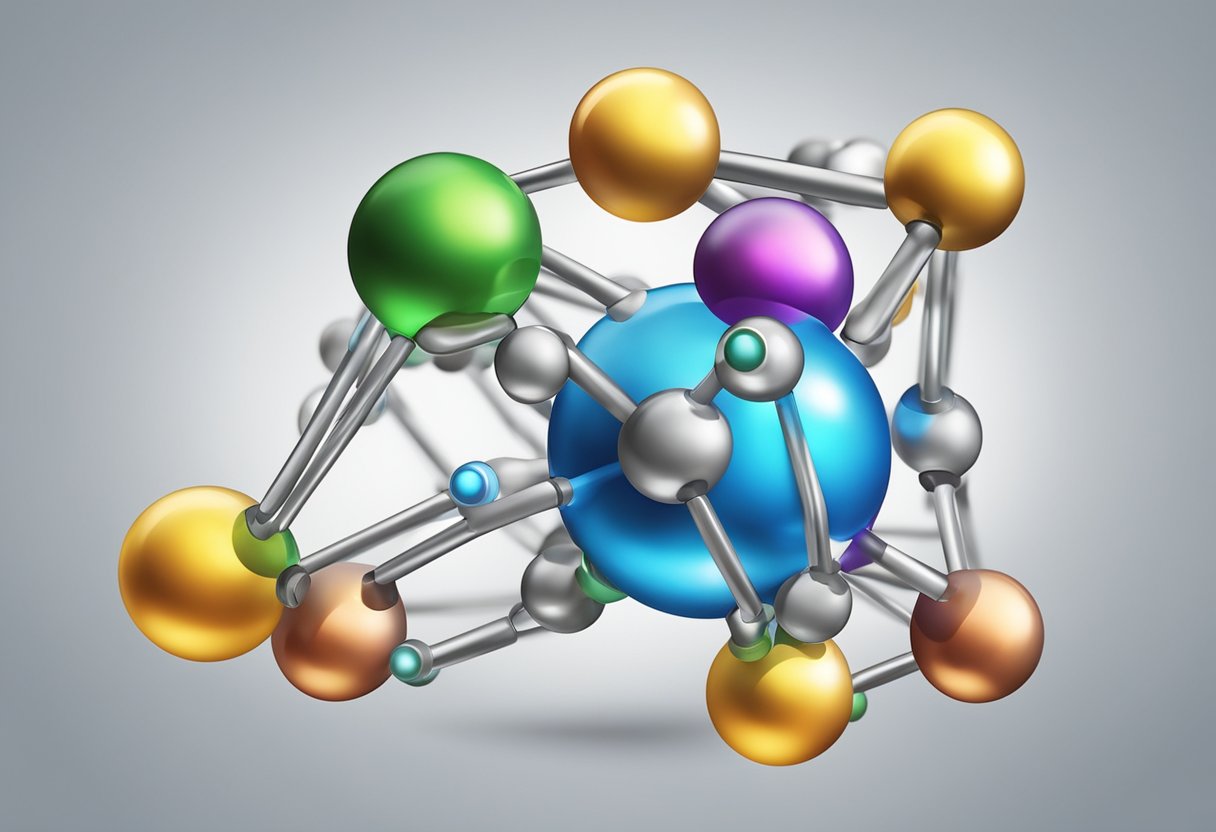Types Of Bonding
Types of Bonding
Chemical bonding is a fundamental concept in chemistry that explains how atoms combine to form molecules and compounds. Atoms are held together by chemical bonds that result from the interaction of their electrons. Understanding the types of bonding is essential to understanding the properties and behavior of chemical compounds.
There are mainly three types of chemical bonds: ionic, covalent, and metallic. Ionic bonds occur when one or more electrons are transferred from one atom to another, resulting in the formation of ions. Covalent bonds occur when atoms share one or more pairs of electrons. Metallic bonds occur when electrons are shared by metal atoms. The type of bonding that occurs between atoms depends on their electronegativity, or the tendency of an atom to attract electrons towards itself.
Bonding Principles and Theories
The principles and theories of chemical bonding are based on the behavior of electrons. The valence electrons, which are the outermost electrons of an atom, are responsible for the bonding behavior of atoms. The octet rule states that atoms tend to gain, lose, or share electrons until they have eight electrons in their outermost shell. This rule explains why atoms form chemical bonds and why some atoms are more reactive than others.
Theories of chemical bonding, such as Lewis structures, VSEPR theory, and molecular orbital theory, provide a framework for understanding the geometry and properties of molecules and compounds. These theories help predict the behavior of chemical compounds and explain their physical and chemical properties.
Key Takeaways
- Chemical bonding is the fundamental concept in chemistry that explains how atoms combine to form molecules and compounds.
- The three main types of chemical bonds are ionic, covalent, and metallic, which are determined by the electronegativity of the atoms involved.
- The principles and theories of chemical bonding, such as the octet rule and Lewis structures, provide a framework for understanding the behavior and properties of chemical compounds.
Types of Chemical Bonds

Chemical bonding is the process by which atoms combine to form molecules and compounds. There are three types of chemical bonds: ionic bonding, covalent bonding, and metallic bonding. Each type of bond is formed by a different mechanism and has different properties.
Ionic Bonding
Ionic bonding occurs when one or more electrons are transferred from one atom to another. This transfer of electrons creates ions, which are atoms that have a positive or negative charge. Oppositely charged ions are then attracted to each other by electrostatic attraction, forming an ionic bond.
A common example of ionic bonding is the formation of table salt, or sodium chloride (NaCl). In this process, a sodium atom donates an electron to a chlorine atom, creating a positively charged sodium ion (Na+) and a negatively charged chloride ion (Cl-). These ions are then attracted to each other, forming an ionic bond.
Covalent Bonding
Covalent bonding occurs when atoms share electrons in order to achieve a full outer electron shell. This type of bonding is typically seen in non-metallic elements.
There are two types of covalent bonds: polar covalent bonds and nonpolar covalent bonds. In polar covalent bonds, the electrons are shared unequally between the atoms, resulting in a partial positive and partial negative charge on each atom. In nonpolar covalent bonds, the electrons are shared equally between the atoms.
A common example of covalent bonding is the formation of water (H2O). In water, two hydrogen atoms share electrons with one oxygen atom, resulting in a molecule with a polar covalent bond.
Metallic Bonding
Metallic bonding occurs when metal atoms share their outer electrons in a “sea” of electrons. This type of bonding is typically seen in metals.
The shared electrons in metallic bonding allow metals to conduct electricity and heat well. This is because the electrons are free to move throughout the metal, allowing for the easy transfer of energy.
A common example of metallic bonding is the formation of iron (Fe). In iron, the outer electron shell is shared among many atoms, resulting in a strong metallic bond that gives iron its strength and thermal conductivity.
Bonding Principles and Theories
Octet and Duet Rules
The octet rule states that atoms tend to gain, lose, or share electrons in order to achieve a stable configuration of eight valence electrons in their outermost electron shell. This rule applies to most elements, with the exception of hydrogen, which only needs two valence electrons to achieve a stable configuration. This is known as the duet rule. The noble gases, which have a stable configuration of eight valence electrons, are generally unreactive due to their already stable electron configuration.
Electronegativity and Polarity
Electronegativity is a measure of an atom’s ability to attract electrons towards itself in a chemical bond. When two atoms with different electronegativities come together to form a bond, the resulting bond can be either ionic or polar covalent. In an ionic bond, one atom completely transfers its valence electrons to the other atom, resulting in the formation of two ions with opposite charges. In a polar covalent bond, the electrons are shared unequally between the two atoms, resulting in a partial positive charge on one atom and a partial negative charge on the other. The polarity of a molecule is determined by the polarity of its constituent bonds and the molecular geometry.
Quantum Mechanics in Bonding
Quantum mechanics plays a crucial role in understanding the nature of atomic bonding. According to quantum mechanics, electrons exist in discrete energy levels around the nucleus of an atom. When two atoms come together to form a bond, the electrons in their valence shells interact with each other and form new molecular orbitals. These orbitals can be either bonding or antibonding in nature, depending on the phase relationship between the atomic orbitals. The bonding orbitals result in a stable bond between the atoms, while the antibonding orbitals result in a destabilized bond.
Overall, the principles of bonding and the theories that explain them are fundamental to our understanding of chemistry. By understanding the octet and duet rules, electronegativity and polarity, and the role of quantum mechanics in bonding, we can better predict and explain the properties of molecules and chemical reactions.
Properties and Behavior of Bonds
Electrolytes and Conductivity
The behavior of a bond is largely determined by its type, whether it is an ionic bond, covalent bond, or metallic bond. Ionic bonds are formed between a metal and a non-metal, and they result in the formation of electrolytes. Electrolytes are substances that can conduct electricity when dissolved in water or melted. This is because they dissociate into ions, which are free to move and carry an electric charge.
In contrast, covalent bonds are formed between non-metals and do not result in the formation of electrolytes. Instead, covalent compounds tend to be poor conductors of electricity, as the electrons are shared between the atoms and are not free to move.
Metallic bonds are formed between metal atoms and are characterized by a “sea” of delocalized electrons that are free to move throughout the material. This is why metals are generally good conductors of electricity.
Bond Strength and Energy
The strength of a bond is determined by the amount of energy required to break it. This energy is known as the bond energy and is typically measured in units of kilojoules per mole (kJ/mol).
Ionic bonds tend to have high bond energies, as they involve the transfer of electrons from one atom to another. This results in the formation of ions with opposite charges, which are strongly attracted to each other. Covalent bonds, on the other hand, tend to have lower bond energies, as they involve the sharing of electrons between atoms.
The strength of a bond is also influenced by the forces between the atoms. In general, ionic bonds are stronger than covalent bonds, which are stronger than metallic bonds. This is because the electrostatic forces between ions are much stronger than the forces between covalently bonded atoms, which are in turn stronger than the metallic bonds.
In summary, the behavior of a bond is largely determined by its type, whether it is an ionic bond, covalent bond, or metallic bond. The strength of a bond is determined by the amount of energy required to break it, as well as the forces between the atoms.
Real-World Applications of Bonding
Chemical bonding is a fundamental concept in chemistry, and its applications are ubiquitous in our daily lives. From the formation of crystals and salts to the creation of organic compounds and polymers, bonding plays a crucial role in shaping the world around us.
Formation of Crystals and Salts
Ionic bonding is one of the most common forms of chemical bonding, and it plays a critical role in the formation of crystals and salts. Sodium chloride, or table salt, is a classic example of an ionic compound that forms as a result of the attraction between positively charged sodium ions and negatively charged chloride ions.
The formation of crystals and salts has numerous practical applications. For example, the production of fertilizer and the purification of water both rely on the formation of ionic compounds. The creation of semiconductors and other electronic components also depends on the precise formation of crystals.
Organic Compounds and Polymers
Covalent bonding is another essential form of chemical bonding that plays a crucial role in the formation of organic compounds and polymers. Organic compounds are molecules that contain carbon, and they are the building blocks of life. Covalent bonds between carbon and hydrogen atoms, for example, are what give rise to the methane molecule, which is the simplest organic compound.
Polymers are large molecules made up of repeating subunits, and they are used in a wide variety of industrial and commercial applications. The formation of polymers often relies on covalent bonding between different atoms and molecules. For example, the creation of plastics and synthetic fibers both depend on the precise formation of covalent bonds.
In conclusion, the applications of chemical bonding are vast and varied, and they touch nearly every aspect of our daily lives. From the formation of crystals and salts to the creation of organic compounds and polymers, bonding plays a critical role in shaping the world around us.






